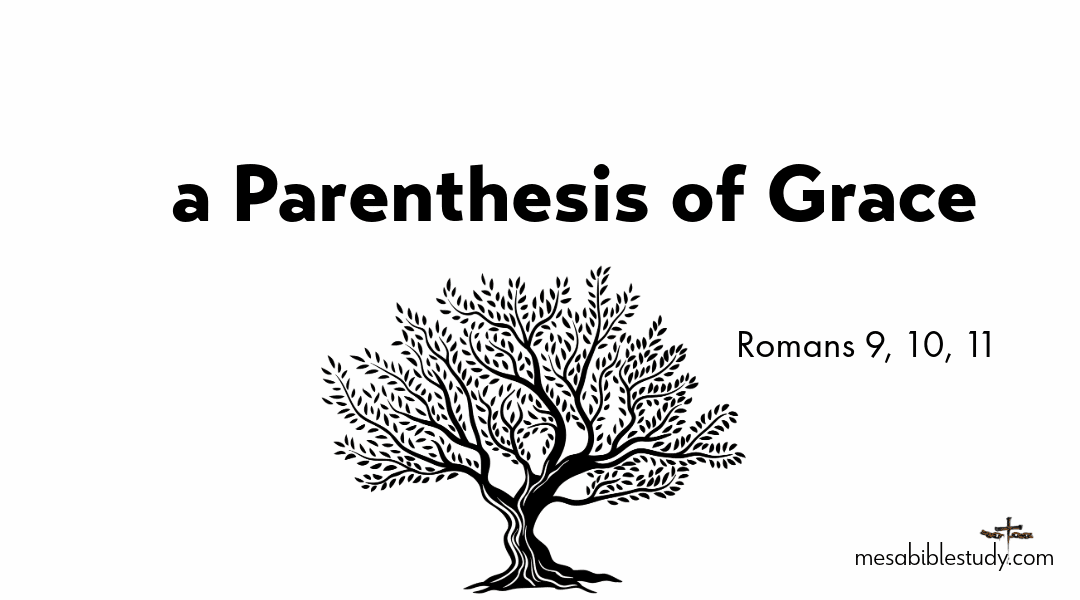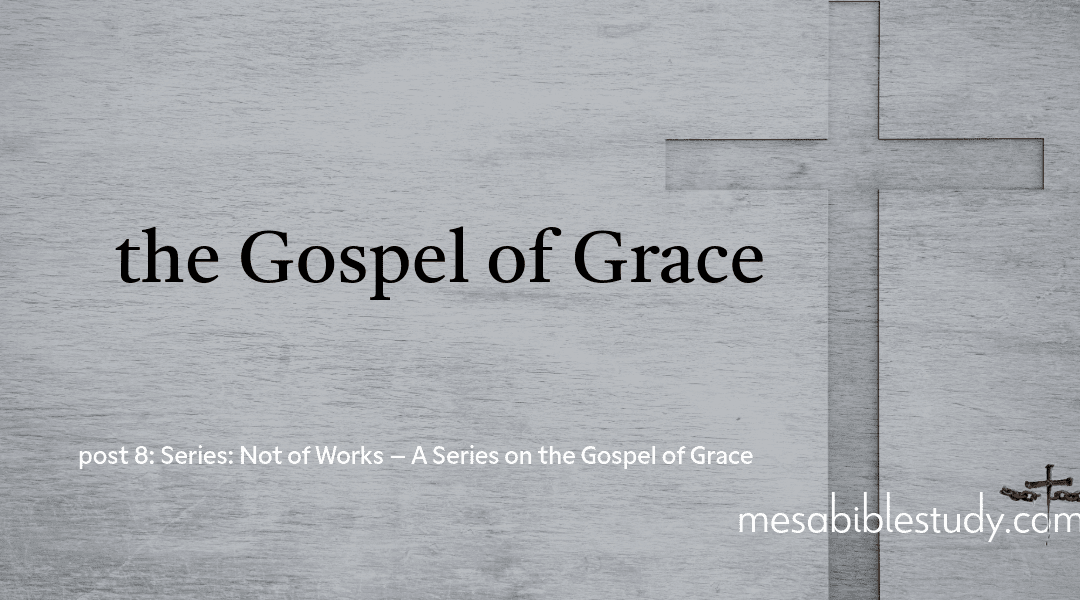
by Jamie Pantastico | Jun 21, 2025 | Pauline Theology |
Titus 2:6–8
“Likewise, exhort the young men to be sober-minded, in all things showing yourself to be a pattern of good works; in doctrine showing integrity, reverence, incorruptibility, sound speech that cannot be condemned, that one who is an opponent may be ashamed, having nothing evil to say of you.”
The book of Titus is a pastoral letter written by the apostle Paul to his spiritual son Titus, who was ministering on the island of Crete. Paul gives Titus practical instructions on how to set things in order within the church—how to teach, how to appoint leaders, and how believers of all ages and stages should live in light of sound doctrine.
Sober-Minded: A Rare Yet Essential Virtue
Paul writes, “Exhort the young men to be sober-minded.” This is no small instruction. In a world of emotional extremes, distractions, and impulsivity, the call for young men to be clear-headed, disciplined, and self-controlled is radically countercultural. Sober-mindedness means more than avoiding intoxication—it’s about having a sound, steady mind governed by truth.
Young men are often marked by passion, ambition, and zeal. These are not inherently bad—but without soberness of mind, such traits can lead to rash decisions, pride, or moral failure. Paul isn’t saying passion is wrong; he’s saying it must be anchored in wisdom.
Application: Young men, do not let the world shape your thinking. Let your mind be renewed by the Word of God (Romans 12:2). Walk with purpose, not just passion. Learn to pause, pray, and weigh decisions before acting.
Be the Example—Not the Exception
Paul continues: “In all things showing yourself to be a pattern of good works.” The word “pattern” implies a visible model, a mold others can follow. Paul isn’t just giving a list of dos and don’ts—he’s urging young men to embody what they believe.
Good works don’t save us (Ephesians 2:8–9), but they affirm the grace of God in our lives (Ephesians 2:10). A young man grounded in Christ should not be known for recklessness, laziness, or rebellion—but for consistency, service, and humility.
Question: If someone followed your pattern of life, would it lead them closer to Christ?
Sound Doctrine With Integrity
Next, Paul says: “In doctrine showing integrity, reverence, incorruptibility.”
Doctrine isn’t just for theologians—it’s for every believer. What you believe about God shapes how you live. But Paul doesn’t stop with doctrine—he calls for doctrine with integrity. This means we don’t just know truth—we walk in it.
- Integrity: No hidden agendas. A life that aligns with what you say.
- Reverence: Holy respect for God and His Word.
- Incorruptibility: A moral purity that can’t be bought, sold, or swayed.
Reminder: What you teach must match how you live. Your credibility depends on it.
Speech That Cannot Be Condemned
Finally, Paul says: “Sound speech that cannot be condemned, that one who is an opponent may be ashamed, having nothing evil to say of you.”
Sound speech means healthy, life-giving words—not gossip, slander, sarcasm, or idle talk. It doesn’t mean you’ll never be criticized, but that criticism won’t stick because your character and words don’t give cause for accusation.
In a culture of careless words, crude jokes, and constant arguments, believers are called to rise above. Whether in conversation, online posts, or private texts, our speech should reflect Christ.
Encouragement: Let your words be marked by truth, grace, and clarity—so even your critics are left with no foothold.
Closing Thought: The Power of a Godly Life
Titus 2:6–8 is not just a message for young men—it’s a blueprint for anyone who wants to live a life that silences the critics and glorifies God. In a hostile world, the most powerful witness is not always what we preach, but how we live.
- Be sober-minded.
- Be a visible pattern of good works.
- Let your doctrine be marked by integrity.
- Let your speech be above reproach.
The world may scoff at truth, but it cannot ignore a life transformed by it.
What about you? Are you living a life that silences the opposition? Is your speech, your doctrine, your conduct pointing others to Christ?
Let Titus 2:6–8 be both your mirror and your map.

by Jamie Pantastico | Jun 10, 2025 | Israel and Bible Prophecy |
Romans 9:1–13 Verse by Verse Study
“Israel’s Past: Chosen, Not Cast Away”
Romans 9–11 is a divinely inspired pause—a parenthesis—within Paul’s revelation of the mystery of the gospel of grace. After eight chapters expounding mankind’s sin nature, and God’s righteousness, justification by faith, sanctification, and the believer’s security in Christ, Paul now answers an urgent question: If Israel was God’s chosen nation, what happened to them? Have they been replaced by the Church? Is God done with Israel?
Absolutely not.
These three chapters form a vital bridge between God’s promises to Israel and His present work among the Gentiles. Paul opens this section with grief—not gloating—because of Israel’s unbelief. And yet, the overarching theme of Romans 9–11 is not judgment, but hope, sovereignty, and God’s faithfulness to His covenant people.
Romans 9:1–5 – Paul’s Heart for Israel
“I tell the truth in Christ, I am not lying, my conscience also bearing me witness in the Holy Spirit, that I have great sorrow and continual grief in my heart.”
“For I could wish that I myself were accursed from Christ for my brethren, my countrymen according to the flesh…” (Romans 9:1–3)
Paul’s anguish is deeply personal. Though he is the apostle to the Gentiles, his heart still beats for his fellow Israelites. He’s not attacking Israel—he’s mourning their spiritual blindness. He lists their privileges: the adoption, the covenants, the Law, the promises, the patriarchs, and the Messiah Himself (vv. 4–5). No other nation has been given what Israel was given.
Yet despite all these blessings, Israel as a nation rejected their Messiah.
But this leads us to the heart of the confusion: Does Israel’s unbelief mean God’s Word has failed?
Romans 9:6 – “They Are Not All Israel Who Are of Israel”
“But it is not that the word of God has taken no effect. For they are not all Israel who are of Israel…” (Romans 9:6)
This is the hinge verse of the chapter, and one that has been twisted into Replacement Theology by many throughout history.
Paul is not redefining Israel. He is distinguishing between ethnic Israel and the believing remnant within Israel. God’s promises have not failed—they are being fulfilled in the true remnant, just as they always have been. God never promised that every single descendant of Abraham would inherit the covenant blessings. Rather, He has always chosen according to His sovereign purpose.
Verse 6 is not a license to spiritualize or replace Israel with the Church. Instead, it reveals that God has always worked through a believing remnant within Israel. Paul will continue this theme through chapter 11, clearly stating that the rest of Israel has been temporarily blinded until the fullness of the Gentiles has come in (Romans 11:25).
Romans 9:7–13 – God’s Sovereign Choice in Israel’s Lineage
“Nor are they all children because they are the seed of Abraham; but, ‘In Isaac your seed shall be called.’” (Romans 9:7)
Paul uses examples from Israel’s own history to show that not all physical descendants are recipients of the covenantal promises.
- Ishmael was Abraham’s son, but the promise came through Isaac.
- Esau was Isaac’s son, but the promise came through Jacob.
These examples are not about individual salvation or predestination to heaven or hell (as Calvinism misapplies), but about God’s sovereign choice in carrying out His redemptive plan through specific people and nations.
“…Jacob I have loved, but Esau I have hated.” (Romans 9:13)
This declaration (quoted from Malachi 1:2–3) refers to nations, not the individual souls of two brothers. God chose Jacob (Israel) to be the line of promise, not Esau (Edom). This was not based on merit or works—it was God’s sovereign purpose, according to His plan.
The Bigger Picture: The Mystery Revealed Through Paul
Paul is building a case to show that God’s dealings with Israel have shifted, but not ended. What happened was not plan B, but a hidden mystery now revealed.
“For I do not desire, brethren, that you should be ignorant of this mystery… that blindness in part has happened to Israel until the fullness of the Gentiles has come in.” (Romans 11:25)
This “mystery” was hidden from the prophets and only revealed through Paul (10 years after Pentecost, let that sink in), (Ephesians 3:1–9; Colossians 1:24–27). That Gentiles would be saved apart from Israel, apart from the Law, and apart from the covenants was unthinkable in Old Testament prophecy. But now, salvation has gone to the Gentiles—not because of their righteousness, but because of Israel’s unbelief (Romans 11:11).
The Gentile’s Role: Gratitude, Not Arrogance
We Gentiles must never boast. Paul will strongly warn against this in Romans 11:18–20. The root supports us—not the other way around. Israel’s fall has brought us blessing, but her future restoration is assured. The Church has not replaced Israel; we are a temporary insertion—a grafted branch, a parenthesis in God’s prophetic timeline.
Conclusion: A Faithful God, A Future for Israel
Romans 9:1–13 introduces a crucial theme: God’s promises have not failed. The current unbelief of Israel does not nullify God’s plan; it highlights it. God is sovereign, His Word stands, and His covenants endure. Israel’s past privileges and future restoration are part of the same unbroken purpose. The parenthesis we are in today—this dispensation of grace—will end. And when it does, God will resume His dealings with Israel exactly as prophesied.
The Church must remember: our salvation was a revealed mystery, a glorious detour, not a divine cancellation. And when the fullness of the Gentiles comes in, all Israel shall be saved (Romans 11:26). Until then, we preach Christ—crucified, risen, and coming again—grateful, humble, and in awe of His unfolding plan.

by Jamie Pantastico | Jun 6, 2025 | Pauline Theology |
Series: Not of Works – A Series on the Gospel of Grace
Anchor Text: 1 Corinthians 15:1–4
When everything is so confusing—when “faith plus fruit”—being good, and doing good is preached as grace and obedience is elevated as the evidence of salvation—we must return to the source:
What is the gospel that saves?
Not what tradition says.
Not what any preacher says.
What does the Bible say?
📜 The Gospel According to Paul
“Moreover, brethren, I declare to you the gospel which I preached to you, which also you received and in which you stand,
by which also you are saved…”
—1 Corinthians 15:1–2
Paul says this is the gospel by which we are saved:
“…that Christ died for our sins according to the Scriptures,
and that He was buried,
and that He rose again the third day according to the Scriptures…”
—1 Corinthians 15:3–4
No steps. No striving.
Just believe that this is true—and that it was done for you.
🩸 The Power Is in the Blood
Salvation is not an invitation to behave better.
It is the good news that Jesus Christ paid your sin debt with His own blood.
“In Him we have redemption through His blood, the forgiveness of sins…”
—Ephesians 1:7
He died in your place, satisfying God’s justice.
He was buried.
And He rose again—proving the debt was fully paid.
This is the gospel.
Believe it—and you are saved.
that if you confess with your mouth the Lord Jesus and believe in your heart that God has raised Him from the dead, you will be saved.
—Romans 10:9
For with the heart one believes unto righteousness, and with the mouth confession is made unto salvation.
—Romans 10:10
👑By this Gospel All Mankind will Be Judged
The apostle Paul makes it graphically clear that all mankind will be judged by his gospel. The gospel that was revealed to Paul alone many years after Pentecost.
in the day when God will judge the secrets of men by Jesus Christ, according to my gospel.
—Romans 2:16
❌ Do Not Add to It
“If anyone preaches any other gospel to you than what you have received, let him be accursed.”
—Galatians 1:9
Don’t add fruit.
Don’t add endurance.
Don’t add holiness.
Don’t add anything.
🗝️ Key Takeaway
The gospel is not “Christ + something.”
It is Christ alone.
You are saved by grace through faith—nothing more, nothing less.
Explore the Full Series

by Jamie Pantastico | Jun 6, 2025 | Pauline Theology |
Series: Not of Works – A Series on the Gospel of Grace
Anchor Text: Romans 6:23
Salvation is not a paycheck for good behavior.
It’s not a reward for perseverance, obedience, or fruitfulness.
It’s a gift.
And if it’s a gift, it’s not earned—it’s received.
🎁 What Does the Bible Say?
“For the wages of sin is death, but the gift of God is eternal life in Christ Jesus our Lord.”
—Romans 6:23
There’s no footnote.
No conditions.
No fine print.
Eternal life isn’t granted at the end of a faithful life. It’s given the moment a sinner believes the gospel.
🛑 The Danger of Treating the Gift Like a Reward
Many preachers often redefine grace like this:
“Salvation is by grace alone… but you must prove it’s real by the way you live, or you won’t receive eternal life.”
That’s not grace.
That’s wages.
“Now to him who works, the wages are not counted as grace but as debt.”
—Romans 4:4
If you’re trying to prove, earn, or finish your salvation—you’ve left grace behind.
✅ A True Gift Has No Strings Attached
“Being justified freely by His grace through the redemption that is in Christ Jesus.”
—Romans 3:24
“It is the gift of God, not of works, lest anyone should boast.”
—Ephesians 2:8–9
There is no holiness quota.
No fruitfulness clause.
No secret performance standard.
The gift of eternal life is offered freely—paid for by the blood of Christ.
All God asks is that you believe.
🗝️ Key Takeaway
Eternal life is not the reward of the righteous.
It is the gift to the guilty.
No striving. No proving.
Just believing.
Explore the Full Series

by Jamie Pantastico | Jun 6, 2025 | Pauline Theology |
Series: Not of Works – A Series on the Gospel of Grace
Anchor Text: 2 Corinthians 11:13–15
⚠️Many denominations—especially in America—preach some form of “final salvation.”
Over the years, I’ve met countless people who didn’t even realize they were trusting in a faith plus something gospel.
Whether it’s faith plus fruit, obedience, baptism, law-keeping, or perseverance, the result is the same:
They weren’t resting in faith alone in the finished work of Christ on the cross. But in another gospel!
‘But even if we, or an angel from heaven, preach any other gospel to you than what we have preached to you, let him be accursed. ‘
Galatians 1:8
Satan’s strategy has never been to deny religion—it’s to corrupt it.
He doesn’t just appear in sin and darkness. He shows up in pulpits. In churches. In robes and suits and smiles. And the message he promotes sounds very holy.
“Live right.”
“Pursue holiness.”
“Faith alone isn’t enough—you must finish strong.”
It sounds biblical. But it’s another gospel—a deadly mixture of grace and works.
👔 Not What You’d Expect
Paul warned the Corinthians about false apostles who preached a gospel that sounded good—but was anything but grace.
“For such are false apostles, deceitful workers, transforming themselves into apostles of Christ.
And no wonder! For Satan himself transforms himself into an angel of light.
Therefore it is no great thing if his ministers also transform themselves into ministers of righteousness…”
—2 Corinthians 11:13–15
Satan doesn’t show up saying, “Reject Jesus.”
He shows up saying, “Follow Jesus better… or else.”
🔥 A Gospel That Demands Holiness to Be Saved
The modern “gospel” being preached today sounds like this:
“You’re justified by faith alone—but only finally saved if your life proves it. You must bear fruit. You must pursue holiness. You must kill sin—or you won’t get in.”
It sounds like light. But it’s bondage in disguise.
“Are you so foolish? Having begun in the Spirit, are you now being made perfect by the flesh?”
—Galatians 3:3
This is Satan’s strategy: distort the gospel, elevate human effort, and make you trust in your performance rather than the finished work of Christ.
❌ These Are Not Minor Errors
Paul doesn’t say “be careful” with these teachers.
He says they are accursed (Galatians 1:9).
Why? Because they turn the good news of free salvation into a system of religious performance.
🗝️ Key Takeaway
Not all who preach righteousness are preaching the gospel.
Some are Satan’s ministers, preaching a message of condemnation dressed up as holiness.
But the true gospel is simple:
Christ died for your sins, was buried, and rose again. Believe it—and you are saved.
Explore the Full Series




